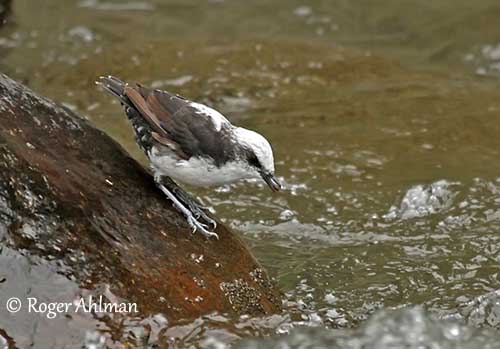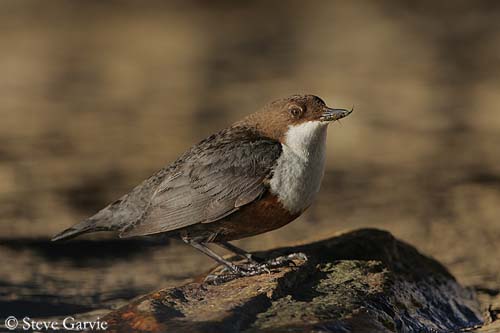
Text by Nicole Bouglouan
Photographers :
Roger Ahlman
Pbase Galleries Peru and Ecuador & My bird pictures on IBC
John Anderson
John Anderson Photo Galleries
Didier Buysse
Vision d’Oiseaux
Jean Michel Fenerole
Photos d’Oiseaux du monde
Steve Garvie
RAINBIRDER Photo galleries & Flickr Rainbirder
Tom Grey
Tom Grey's Bird Pictures & Tom Grey's Bird Pictures 2
Eugène Montocchio
Galerie Photos Nature
William Price
PBase-tereksandpiper & Flickr William Price
Simon Tan
PBase Bird galleries
Ingo Waschkies
Bird Photography
Nicole Bouglouan
Photographic ramble & My pictures on IBC
Illustrateur :
John Gerrard Keulemans (1842-1912)
Origine de l’illustration :
Argentine ornithology. A descriptive catalogue of the birds of the Argentine Republic
Sources :
HANDBOOK OF THE BIRDS OF THE WORLD Vol 10 by Josep del Hoyo-Andrew Elliott-David Christie - Lynx Edicions - ISBN: 8487334725
WRENS, DIPPERS AND THRASHERS by Brewer David – illustrated by Barry Kent Mackay- Yale University Press - ISBN: 0300090595
Birdwords - The official site of Dominic Couzens, natural history writer
Our Beautiful World - Dippers, Cinclidae
FAMILY CINCLIDAE
Dippers of genus Cinclus
The Cinclidae are part of the Order Passeriformes, and the five species of genus Cinclus are found in both New and Old Worlds, especially North, Central and South America, NW Africa, Europe and Asia.
These passerines are adapted to the life in aquatic habitats, and are able to swim and dive underwater. They feed primarily on aquatic insects caught at water surface of just below. They often perch on rocks in the water, waiting for prey or singing. They nest along fast-flowing streams and rivers, often in rock crevices, rocky ledges or under bridges, and build a globular structure with moss and grass. The young are fed by both parents that share the nesting duties.
Dippers are threatened by pollution and degradation of riverine habitats. Four species are not globally threatened, but the Rufous-throated Dipper is currently listed as Vulnerable.

The dippers are plump birds with short wings and tail, long plumage and thick layer of down. The oil produced by the large oil-gland at tail base is used during preening, in order to maintain waterproofing, allowing the birds to survive in very cold and near-freezing water at high elevations. On the other hand, they stand in shallow water in higher temperatures.
Their short, broad, powerful wings help the bird to propel itself underwater, even in very fast-flowing streams. However, the moult involves less frequent diving and flying, especially in White-throated Dipper. This period in not well known for the other species.
The long, strong legs of dippers have sharp, curved claws very useful when the birds grip rock and mosses both in water and on riverbanks. The bill is usually slender and slightly hooked.
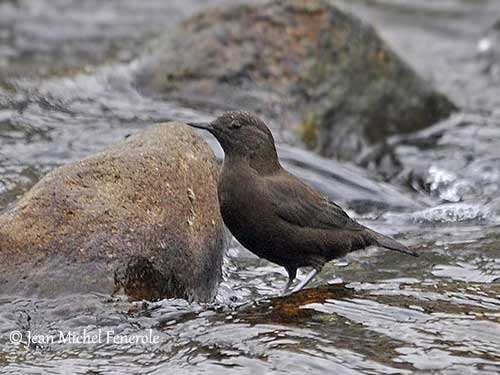
As these species forage by diving and swimming underwater, they have narrow nostrils with a nasal flap (or broad membrane) to close them while the birds are submerged. However, the Rufous-throated Dipper has never been observed swimming or diving for prey like other Cinclus species.
The eyes have eyelids covered with white feathering, involving a flash of white when the birds blink. This action is observed when the birds bob or dip, and is probably used in courtship and threat displays too. This membrane is probably a protection when the birds are swimming underwater.
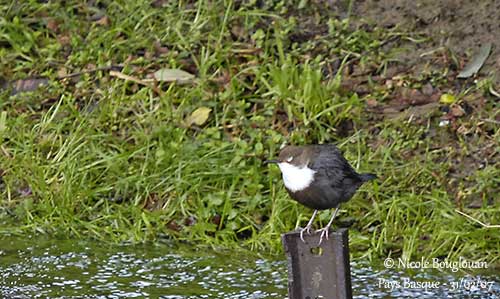
On the five species of dippers, both American Dipper and Brown Dipper have uniform greyish to brown coloration. The Rufous-throated Dipper is grey-brown with rufous throat. The White-throated Dipper and the White-capped Dipper have varying amount of white in their plumage, with more variations according to the subspecies.
Males are often darker and slightly larger than females, but they have fairly similar plumages.
The juveniles are paler than adults, with pale-edged feathers, mottled underparts and paler bills. They need about six weeks to obtain the adult plumage, but they still have pale edges to greater upperwing-coverts.
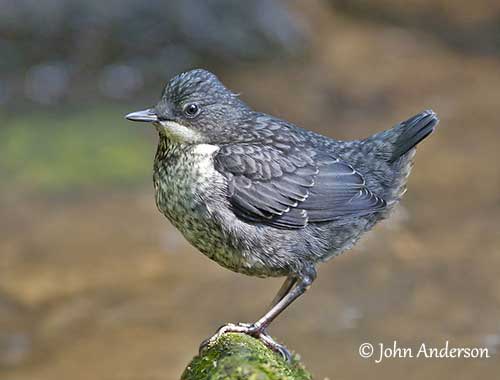
Juvenile
The dippers frequent fast-flowing streams and rivers at high elevation. They need cold, clear, unpolluted waters with stony beds, even impetuous mountain streams. They require rocks to perch, feed or dive, and suitable nesting-sites such as cliffs, rocks covered with moss, waterfalls, bridges or walls with holes or ledges for nesting and roosting.

Habitat
They live in hill and mountain ranges up to at least 5,000 metres of elevation. They favour streams in forest that provide terrestrial insects and caterpillars that supplement their usual diet of aquatic invertebrates including Trichoptera, Plecoptera and Ephemeroptera, but also molluscs, crustaceans, small fishes and salmonid eggs, depending on the range and the season.
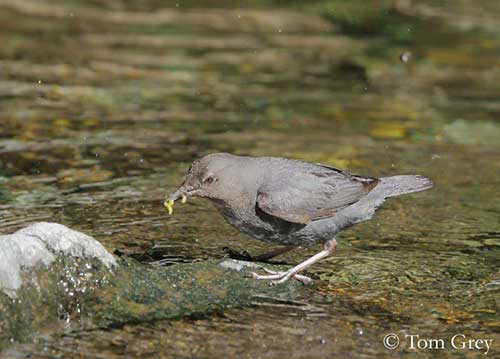
Dippers feed by wading in shallow water while probing among stones, turning fallen leaves, gleaning on wet surface of rocks or picking prey from the vegetation.
The White-capped Dipper and the Rufous-throated Dipper from South America have not been observed diving underwater. They usually submerge only the head and often dip the bill, or wade while picking prey.
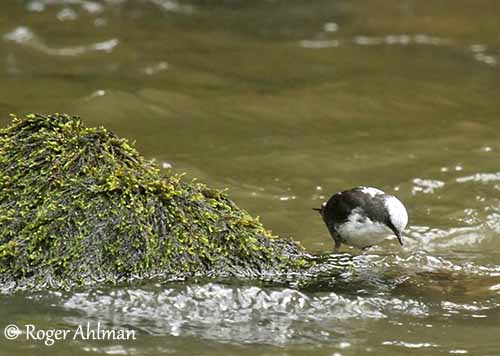
However, the three other species dive and swim for prey in shallow water of less than 1 metre in depth, often submerging completely. They can remain underwater for up to 20 seconds, but the dives are usually only 3-4 seconds in duration and made in series.
In order to remain fully submerged, the dippers perform rapid wingbeats that also allow forwards movements. They use the legs for running on the riverbed and to propel themselves, but also to cling to rocks on the riverbed.
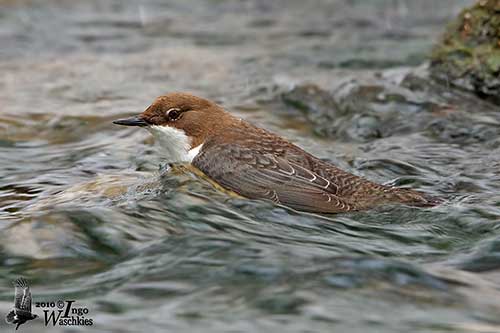
In addition, dippers perform exaggerated bobbing of the body, while flicking the tail and blinking of the white upper eyelid. The two Andean species bob infrequently but they rapidly flick their wings in order to expose the white wing patch across the primary feathers.
The dippers have a fast, direct flight, usually performed low over the water while following a watercourse. But they fly higher when they are outside of their territory. They are able to fly high into the air during dispersions over mountain ridges and on migration.
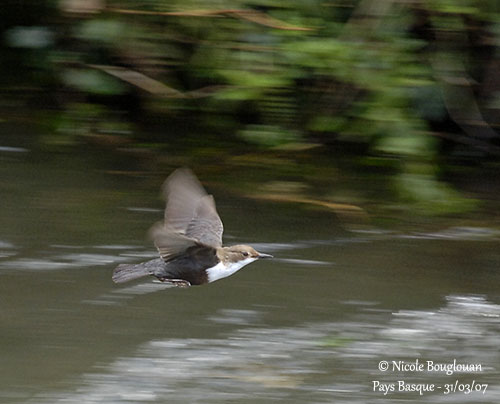
The five species maintain linear territories along streams and rivers, from 300 metres to 2-3 kilometres, depending on food availability. The breeding territories are usually established along productive waters. They are territorial during the breeding season, but also throughout the year. Small gathering may occur close to high food production, and in extreme cold conditions. They also may roost together, especially during autumn and winter, but rarely in close contact. They use ledges in bridges, crevices or holes in which they can perch. They are usually faithful to these sites.
All species sing throughout much of the year, and both sexes give loud, musical wren-like song. These songs can be given to establish both wintering and breeding territories.
The typical song is high-pitched with repeated short sequences and simple repertoire. The female’s song is generally less melodious, more scratchy, and consists of series of whistles.
But the male is usually more vocal. It sings from a low rock in the water or from the bank, but also from ice edge or low stump, and can be given on the wing too.
Alarm and contact calls of the five species are loud, high-pitched and sufficiently penetrating to be detected against the noise of the water. The “zzit” or “clink” notes are repeated quickly if a bird is alarmed or excited. But several other calls are reported, according to the situation and the behaviour of the bird.
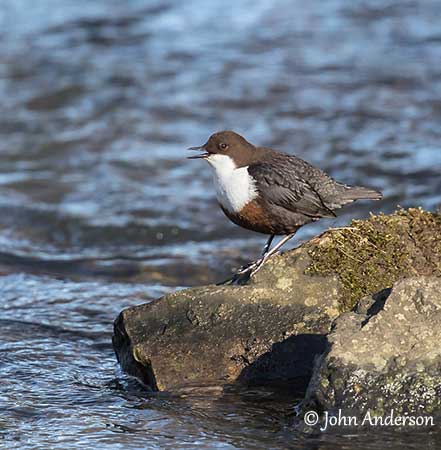
The breeding biology is mainly known for three species, the White-throated Dipper, the American Dipper and the Brown Dipper, but usually, the Cinclidae performs fairly similar courtship and advertising displays.
They are mainly monogamous, and both adults defend the territory and rear the young. Some cases of bigamous-polygynous males are reported, but the associated females are in contiguous territories. This situation occurs especially when females outnumber males along the same river.
Some displays are described, and especially for the White-throated Dipper, during which the male perches upright, throws the head back with bill more or less vertical. The white breast feathers are ruffled while the head moves slowly from side to side, the wings are partly open and drooped, and the tail is fanned and lowered.
The male approaches the female, and once she is used to its attentions, he runs around her while dipping, blinking, quivering its wings and calling. Both mates also perform high aerial displays or chases accompanied by song.
The courtship displays of the other species are less known, but they are fairly similar, especially in the Brown Dipper.
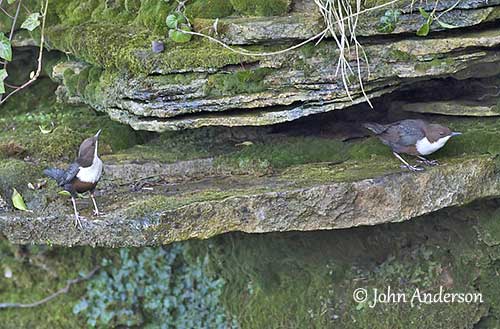
Pair visiting nest-sites
All species build the nest by or over running water. It is placed in cliff faces, cliff ledges or similar site behind waterfalls, hollow among roots on the riverbank, on or under rocks, holes in stone or brickwork of walls and bridges. Some nests can be placed in tree fork or fallen branches over the water and nestboxes have been used too. The same nest is often lined and repaired and used for several broods, but sometimes, the pair builds a new nest close to the first one.
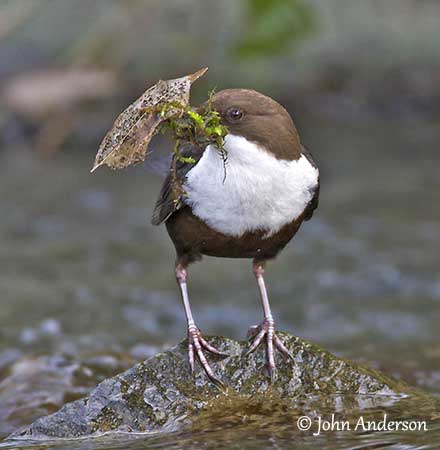
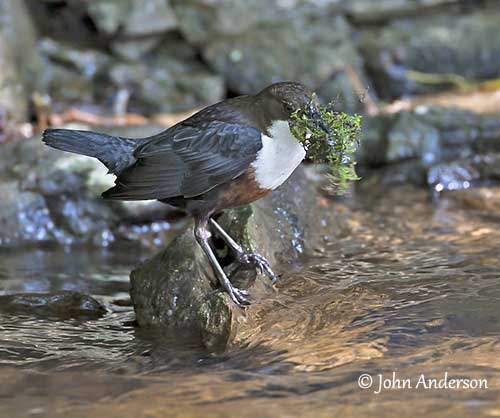
Collecting nest materials
Collecting nest materials
The nest is a globular structure of moss with addition of grass (or not). If the nest is built on cliff face or wall, they create a circular base for the back of the nest, and may add mud to the moss to secure the structure. In crevice or nestbox, the nest lacks dome and sides, and consists only of mossy base and inner cup. The lining is made with leaves or occasionally hair.
The birds use the nest materials found in the vicinity of the nest-site, and the vegetation used for the nest-building may vary depending on the range. Both adults build the nest, but the female usually completes it.
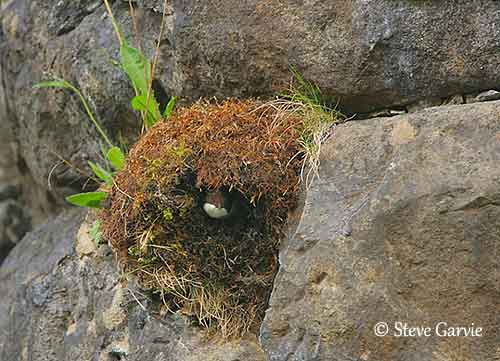
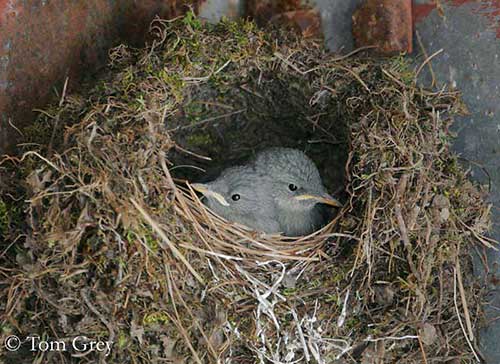
Chicks at nest
All species breed very early in spring, but the timing depends primarily on food abundance and temperature. They usually lay 4-5 white eggs, probably less in the Andean species. The female incubates alone, although the male may sometimes replace her. The incubation lasts 16-17 days, but the period can be longer at high elevations. The male may feed her during the incubation, and it often guards the nest and protects its mate against other males.
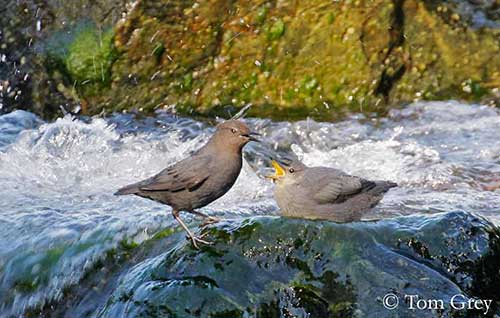
Chick-feeding
The chicks are naked at hatching, and depend entirely on both parents for food. They are brooded by the female during the first 12-13 days. The chicks are fed in the nest and later, one after the other at the entrance. The nestling period lasts about three weeks or more. If they are threatened, the young are able to drop or to plunge into the river below the nest, and then, they swim and dive perfectly. They hide among rocks or vegetation where the adults still feed them. Once fledged, the parents feed them during 1-2 weeks. They can survive on their own 2-3 weeks after leaving the nest.
The dippers have relatively high breeding success due to the inaccessibility of their nests. They may produce a second clutch if they have sufficient time to rear the second one. If the female starts a second brood, the male continues to rear the first young.
Juvenile
The dippers are mainly sedentary because they are well adapted to a wide range of temperature. But that depends on food availability, sufficient daylight for feeding and sufficient areas of unfrozen rivers.
However, the White-throated Dipper breeding in the Urals and Fennoscandia performs long-distance migration caused by very short winter days. It flies south-eastwards into S Finland, Latvia, Estonia, Denmark, the Netherlands and Belgium. They return to their breeding grounds in spring by crossing the Baltic Sea. In all species, the juvenile disperse, but usually over short distances.

Except for the Rufous-throated Dipper, the four other species have relatively large ranges in which they are common in suitable habitats and streams. The local declines are caused by pollution and degradation of riverine habitats, even in upland sites. But these species are not globally threatened and evaluated as Least Concern.
The Rufous-throated Dipper has relatively small range and small population in S Bolivia and NW Argentina. It is threatened by alteration of river channels and pollution at lower elevations. In Argentina, the riverine habitats are threatened by reservoir construction, irrigation and eutrophication. Soil erosion caused by livestock-grazing is a significant problem too. It is listed as Vulnerable.

John Gerrard Keulemans
(1842-1912)
Dippers are able to fly underwater even in very fast-flowing current. They nest close to the water that provides them most of their food, and they can live in extreme cold weather at high elevation. Both parents rear the young and defend the territory along the river.
Dippers and water are inseparable and their life-cycle is very closely related to their specific habitat.
Dippers are really amazing birds!
